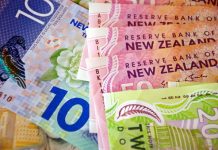Gold Surges as Fed goes full dovish
Yesterday FOMC was unspectacular, as interest’s rate was kept unchanged, the key takeaway was clear. By removing the “patient” from the official stated, the Federal Reserve has to shift into a dovish bias. Their economic assessment was upbeat but the changes in policy direction were justified by a weak inflation outlook. The market is now pricing in the likelihood of three rate cuts in 2019. The move is coming as the market is pricing in a probability of 100% cut in July (from 80% chance prior), and two additional cuts up to 70% form 45% before the meeting. Risk appetite responds as expected as U.S. stocks rose marginally (banks stocks surpassingly lagged) and USD fell against all G10 currencies. With expectations of the US central bank further debasing the USD, gold prices surged, climbing from $1357 to $1394 high in a single session. Golds inverse correlation to US real yields is strong. As the Fed pushes the front-end yields lower (US 2-yrs yields fell sharply from 1.87% to 1.73%), Gold shine should further improve. With President Trump tweeting for a weaker USD, and Powell seemly capitating Gold might be poised to regain its title as the anti-USD (momentarily stolen by upstart bitcoin). That said, the king of crypto is head back towards $9477 range high.
BoJ cannot relieve JPY
Investors took a closer look at the US central bank’s statement, confirming that rate cuts are possible solutions in order to sustain expansion. Meanwhile, the Bank of Japan monetary policy meeting did not bring anything new to the table, although Fed and ECB are shifting policy towards a dovish bias. Therefore, we should see JPY gaining traction as market uncertainties, BoJ limited room of maneuver remain key arguments.
Similarly to prior meeting in 25 April 2019, BoJ members have been voting 7 – 2 to maintain ultra-loose monetary policy, with short- and long-term interest rates -0.10% and around 0% respectively while maintaining the pledge to increase government bonds holdings by JPY 80 trillion ($742 billion) per year. The BoJ’s economic assessment is unchanged, indicating that the economy is growing at a moderate pace and unlike the Cabinet Office cut from “weakening” to “worsening” two weeks ago. As the trade war is reducing Chinese demand of Japanese goods, and easing from both the ECB and the Fed would have a negative impact on the Yen and ultimately on economic growth and inflation, some analysts are expecting the BoJ to cut interest rates, even if such a reaction would have a limited impact in our view. Japanese banking sector already faces heavy margin pressures, while a further decrease in interest rates could harm the financial health of the sector. On the other hand, a stronger JPY would also become a major impediment for the Japanese exporting industry looking forward.
USD/JPY currently trades at 107.78, approaching major support at 107.68 (03/01/2019).












